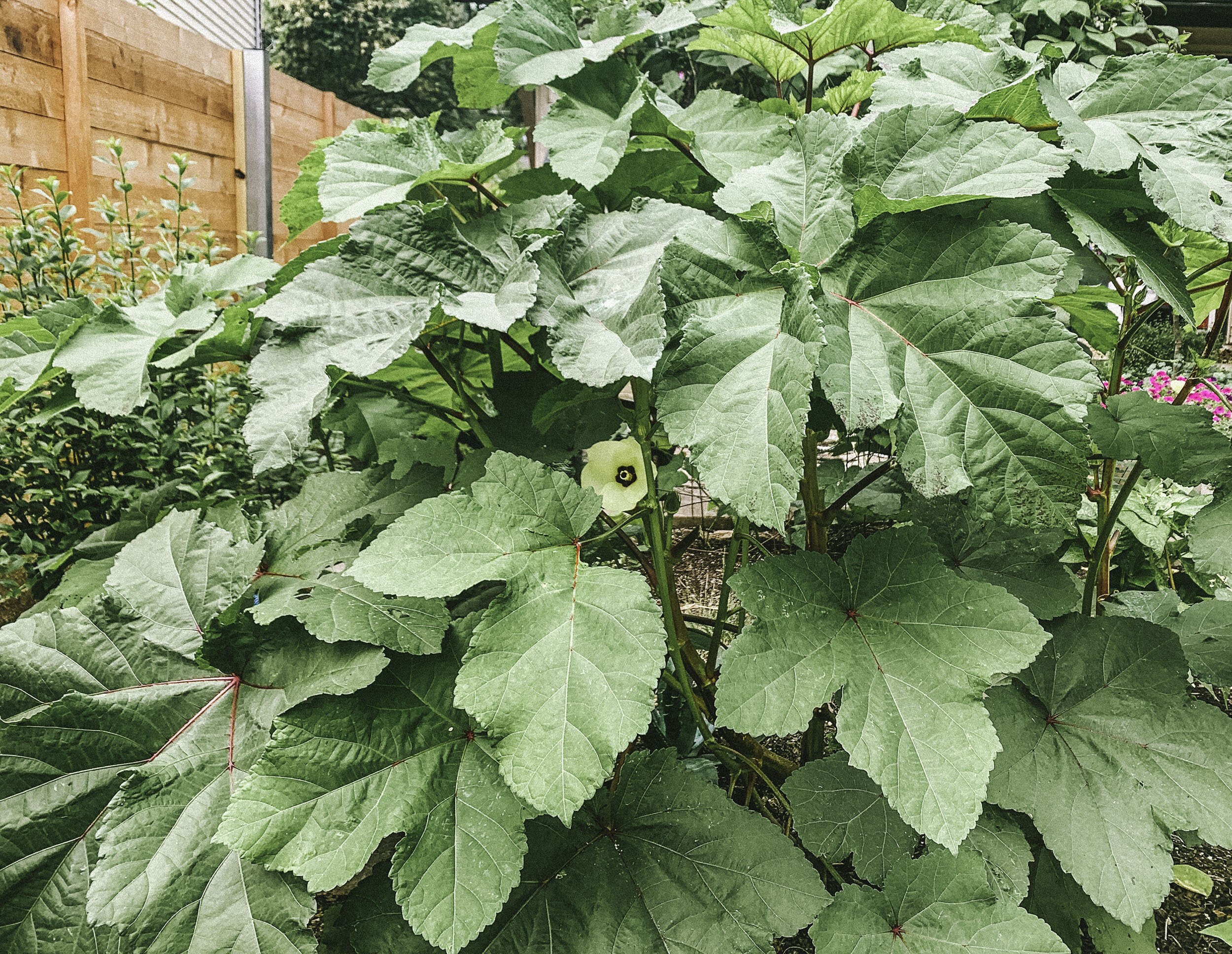STARTING INDOORS (optional): Okra grows easily from seed once temps are above 70°. To make them germinate faster, soak the seeds in a glass of filtered water overnight. To start indoors, sow in 3" pots, or repurposed toilet paper rolls, 3 seeds per pot, 1/4" deep. When seedlings are an inch tall, snip the two weakest ones leaving one per pot. Do this if you are growing them in containers as well. Use a heat mat for fast germination and supplement with grow lights. Harden off and plant out 18" apart in an area that receives at least 5-6 hours of sunlight a day. Do not disturb roots. If you are in a colder area, you can use row cover to keep them warmer until temps are in the 70°s.
DIRECT SEEDING: After frost danger, sow 2" apart, 1/2" deep when soil is warm- at least 70°F (21°C). Thin to 12-18" apart.
HARVEST: Harvest promptly by clipping pods at 3-4" long to keep plants productive. Oversized pods become tough and inedible. Do not prune every day. Let the plant recover.




